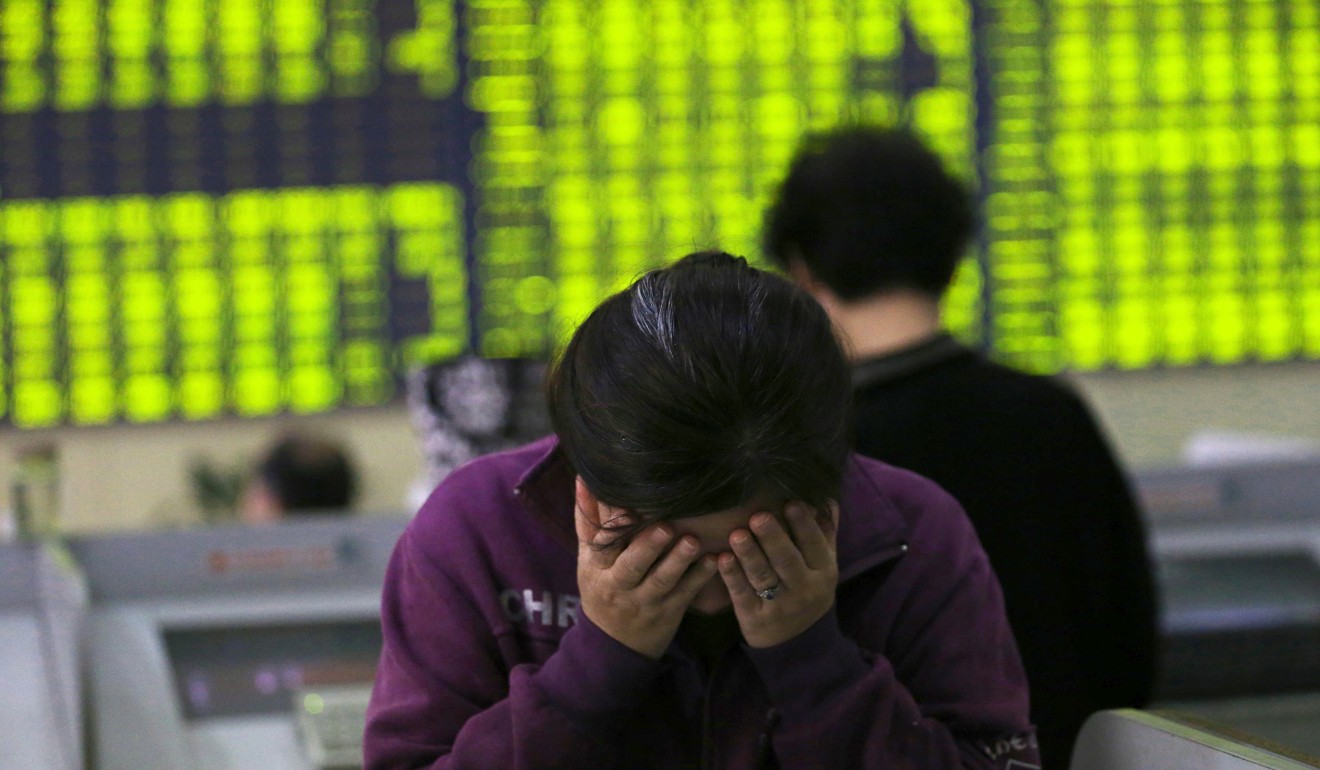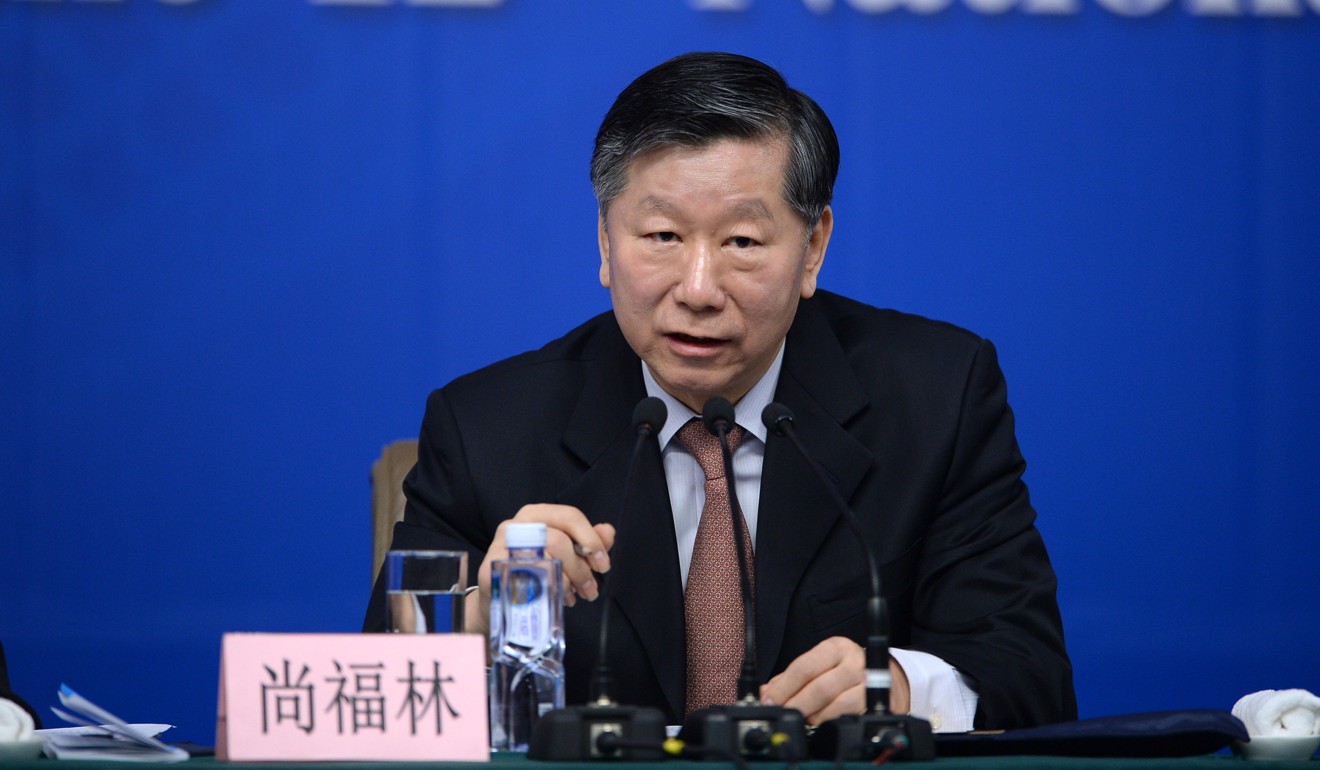
Who’s the best of them all: how China’s stocks perform during tenures of CSRC chiefs
The benchmark Shanghai Composite Index has fallen 22 per cent this year, and is the world’s worst-performing among major markets
China’s stock market regulator has finally begun to listen to investors as the world-beating decline of Chinese equities shows no sign of abating. The chairman of the China Securities Regulatory Commission Liu Shiyu met 15 representatives from the nation’s 134 million investors at a brokerage house in Beijing over the weekend.
Here’s how the benchmark Shanghai Composite Index fared during the terms of each CSRC chairman:
1. Liu Hongru: October 1992 to March 1995
The Shanghai Composite Index posted a 24 per cent gain when the first CSRC chairman served his term. The expert on monetary policy was appointed by then vice-premier Zhu Rongji. Liu also initiated innovation in securities products, such as H shares that allow Chinese companies to raise capital overseas by floating shares in Hong Kong.

2. Zhou Daojiong: March 1995 to July 1997
The most pressing task Zhou was facing when he became the CSRC chairman was how to deal with the excesses on bond futures trading. He finally decided to shut it down, causing funds to switch to stocks, which led to a spurt in equities. The market expanded quickly during Zhou’s term, as he accelerated the pace of initial public offerings to help the listings of numerous state-owned enterprises. The Shanghai Composite jumped 79 per cent through the day when he stepped down.
3. Zhou Zhengqing: July 1997 to February 2000
Zhou’s biggest achievement was to crack down on illegal off-exchange trading and clean up brokerage institutions. His term coincided with the dotcom boom on the Nasdaq market. The frenzy that spilled over to China’s market saw the Shanghai Composite surge by 70 per cent in less than two months starting in May 1997. The index rose 38 per cent in Zhou’s entire term. Zhou died in July this year.

4. Zhou Xiaochuan: February 2000 to December 2002
Before becoming China’s longest-serving central bank governor, Zhou was the fourth chairman of the stock market regulator. While Zhou took on reforms to change the IPO mechanism to one that is approval-based and to allow foreign investors to buy Chinese stocks through the qualified foreign institutional investor programme, the stock market was at the centre of public criticism after a well-known mainland economist Wu Jinglian likened it to a casino and a slew of cases involving manipulation and insider trading shattered investors’ confidence. Zhou also failed to tackle the hangover of non-tradeable shares that conflicted the interest between state owners and smaller investors. The Shanghai Composite dropped 15 per cent until Zhou moved to the central bank.

5. Shang Fulin: December 2002 to October 2011
As the longest-serving CSRC chairman, Shang’s biggest feat was to start the state share reform, converting non-tradeable shares held by state shareholders into the stocks that can be commonly traded on the exchanges. The move aligned the interests of both major shareholders and small investors for stock prices to perform well. The Shanghai Composite rose to a record high of 6,092.06 in October 2007 after surging six folds in two years. It rose 79 per cent when Shang was in office.
6. Guo Shuqing: October 2011 to March 2013
Guo was complimented by investors as the most hard-working chairman in the CSRC’s history, introducing more than 70 rules to iron out flaws and develop the market. Still, the Shanghai Composite lost 7.9 per cent in his reign. He encouraged more dividend payouts among listed companies, had zero tolerance for insider trading and strengthened delisting rules, while introducing margin trading and over-the-counter market, as well as restoring bond futures trading.
7. Xiao Gang: March 2013 to February 2016
Xiao was brought to the fore when a major crash swept China’s market in 2015, erasing US$5 trillion in value as leveraged traders fled stock bubbles. He introduced a controversial circuit breaker system in early 2016 that was meant to calm investors in quick market declines. But the move backfired, causing even faster declines as investors tried to pull out before trading was suspended. The circuit breaker was immediately scrapped and Xiao quit afterwards. Still, the Shanghai Composite rose 28 per cent during Xiao’s term.

